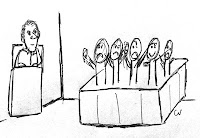As you may know , how we think about our own qualities has a big impact on how we feel, how we behave, how we learn and how we perform. Thinking our abilities (such as our intelligence) are fixed (this is called a fixed mindset) makes us less challenge seeking and less persistent and also more defensive. Also our performance is lower over time. A growth mindset, thinking that our qualities can be developed through effort, leads to more challenge seeking, persistence, openness, learning and performance over time. Thinking about others' qualities as fixed also has consequences such as being quicker to stereotype and label people, to be less open to new information about people, and to punish them quicker when they have done something wrong. In a chapter in a new book , Carol Dweck mentions two lesser known finding with respect to mindsets.




